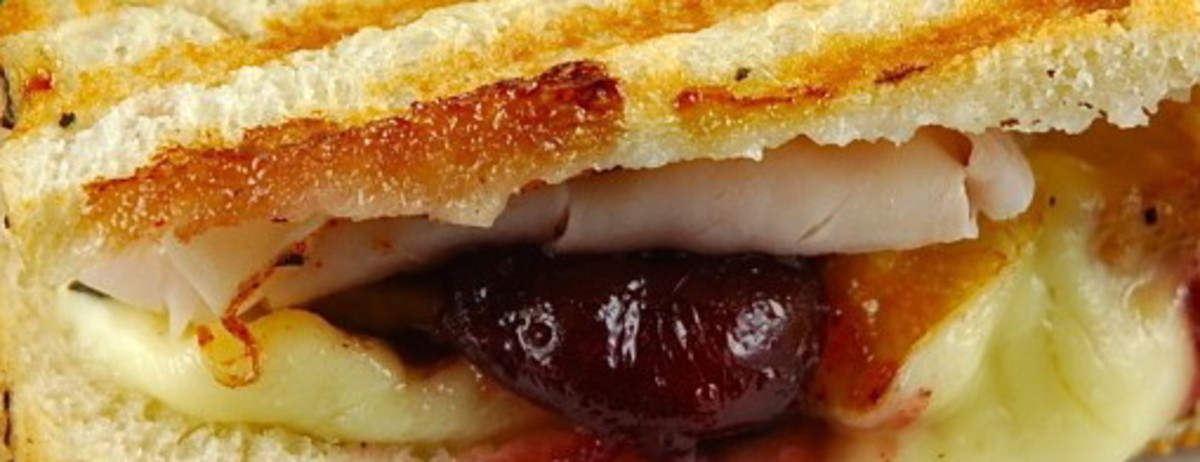Christmas Leftovers
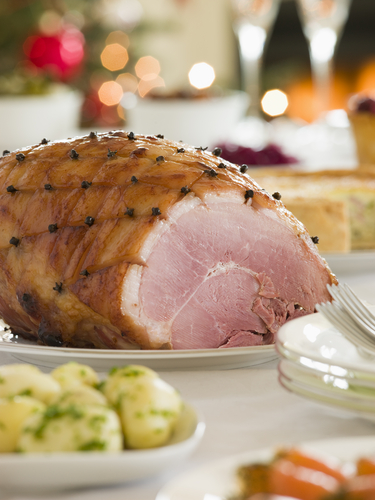
"Love is lovelier the second time around
Just as wonderful....."
The Second Time Around, 1960
These lyrics could also be sung about food. However, in our society of plenty, where freshness is next to godliness, eating leftovers is largely a reluctant capitulation to childhood-instilled "waste not, want not" conscience. Leftovers are not necessarily about dreary repetitions of the original. Their culinary use is an art form in itself. The 19th century French bon vivant Fulbert Dumonteil wrote: "Ah, I beg you, do not be disdainful of the art of using leftovers which, ultimately, is the great art of living."
The Art of Leftovers
According to Dumonteil, croquette périgourdine (i.e. with truffles) was the ultimate culinary metamorphosis, capable of perfuming the whole house. "All the exquisite leftovers - roast beef and lamb fragrant with garlic, the subtle taste of veal topside, the delectable savour of chicken, the bouquet of quail and partridge - add their various flavours and lend their individual note to the admirable harmony of the whole." He opined it was a venial sin if croquettes so formed were not ornamented with slices of black truffles cooked in Champagne. Clearly, thrift had nothing to do with using leftovers in this instance.
Leftovers formed an important part of the 19th century Parisian diet and were regarded as perfectly respectable, even in well-to-do households. Jean-Paul Aron in his paper The Art of Using Leftovers: Paris 1850-1900 notes the existence of three networks in Paris for the distribution of leftovers from top restaurants and embassies.
Leading restaurants and caterers often disposed of all items from the previous day by private sale to lesser restaurants and specialist dealers in leftovers. Thus the more intact leftovers of a 25-franc restaurant might reappear on the tables of a 17-sou dive.

There was also a private trade in surplus raw ingredient between specialist producers. For example, parfait or ice-cream makers whose trade involved only egg yolks would sell their egg whites to white-only specialists such as macaroon makers.
The specialist leftovers dealers, known as "jewellers", would pick up leftovers from major hotels, restaurants, government ministries and embassies. The wares would be sorted and, after official inspection, sold to the public at stalls near the poultry building in Les Halles as well as other markets, under the watchful eyes of the police. The sorted platters were termed "gems". The cheapest had more vegetables than meat. More expensive platters might have crayfish in Bordeaux wine, calf's head and apple charlotte. Customers ranged from people working for starvation wages to housewives from lower-class neighbourhoods.

There was also the clandestine trade dealing in leftover “gems”. Euphemistically called “harlequins”, these gruesome amalgams of gnawed-off bones, half-chewed cutlets, contaminated fish bones and fragments of pastries mixed together were hawked through the suburbs by disreputable persons known as houilleurs, or coal miners.
In Australia, the organisation SecondBite was established in 2005 to collect surplus foods from supermarkets, restaurants and other food outlets for distribution to charities. Perfectly edible food used to go to landfill simply because they were a day old or visually damaged and could not be sold at full price at the retail level. Through the work of SecondBite, these foods are now redeployed to provide quality nutritious meals for the needy. You can find out more about their work at http://www.secondbite.org
Prized Leftover Dishes in Asian cuisines
That supposed Chinese dish, chop suey, originated from leftovers. The story goes that late one night, a San Franciscan Cantonese restaurant was invaded by drunks (their rumoured identity varies from miners to sailors to famed Chinese visitors), demanding a meal. With no food left, but in fear of being lynched, the chef fried together the day's slops, which the drunken party enjoyed immensely. Thus chop suey (from the Canotnese tsap sui, meaning miscellaneous slops) was born.
However, Asian cuisine does have many respectable and much-loved leftover-based dishes. A great favourite is salted steamed chicken, the Chinese equivalent of the French confit sans goose fat. "White cooked" or steeped chicken pieces are generously coated with coarse kitchen salt, refrigerated overnight and gently steamed the follow day. The flesh remains silky smooth and develops a rich complex flavour. Steeped chicken is common in Chinese households as it is frequently used as offerings in pai san (worshipping divinities) rites.
The Straits Chinese relish the dish kiam chye boey or 'leftovers supreme'. This dish requires the leftovers of a full-course Straits-born banquet, excluding those dishes that were made with a mixture of spices. These leftovers are then simmered with salted mustard greens until the latter are soft. So coveted is this leftover dish that guests attending the banquet often request that they be allocated portion of this dish the following day.
How many forms of ham sandwiches can one face?
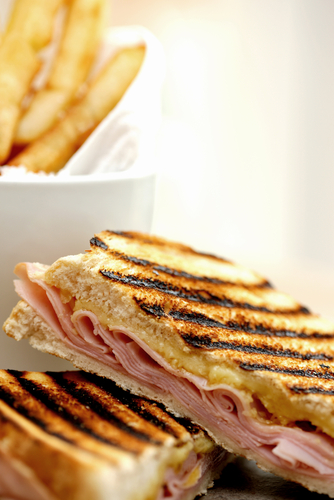
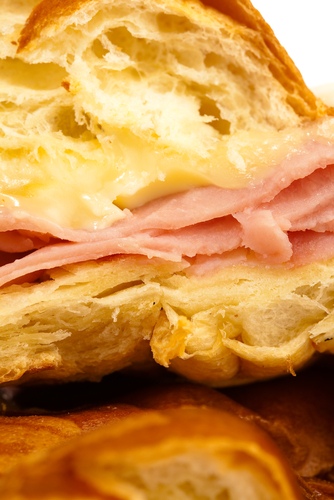
CRISPY HAM & NOODLE CAKE
For those who love the magnificence of a full leg of ham on the Christmas able but dread its seemingly endless recurrence in sandwiches post-festivities, this recipe will have you doing an Ol' Blue Eyes to your ham: "I'm so glad we met the second time around."
(Makes 16 wedges)
300 g ham
30 g unsalted butter
3 medium-sized brown onions, coarsely chopped
3 x 60 g eggs
1 cup pure cream
1 cup tightly packed parsley leaves, finely chopped
50 g semi-dried tomatoes, finely sliced
Salt and freshly ground black pepper to taste
500 g dried spaghettini, cooked al dente
125 g fresh mozzarella, finely grated
175 g pecorino romano, finely grated
Clarified butter for shallow frying
Dice ham into 0.5 cm cubes. Melt unsalted butter in a heavy frying pan over moderate heat. Fry onions until golden brown.
In a large mixing bowl, whisk eggs with cream. Add sautéed onions, parsley, semi-dried tomatoes, salt and pepper and mix thoroughly. Toss the cooked spaghettini in the mixture. Add ham and cheeses. Toss until evenly mixed.
Pack the mixture into 2 well-greased 20-cm spring-form cake tins. Bake at 180ºC for one hour. Cool on a rack for 30 minutes. Run a sharp knife around the edges: turn cakes out and leave to cool completely. Wrap tightly in foil and refrigerate overnight.
The next day, cut the cakes into large wedges. Heat clarified butter in a frying pan over moderate heat. Fry the wedges, turning with tongs, until all sides are crisp and golden.
Serve hot as a first course or light lunch dish or as a snack. Gruyere or cheddar may be substituted for the two cheeses but the texture will not be as creamy in the centre.
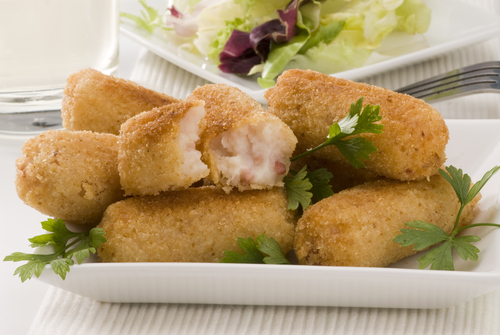
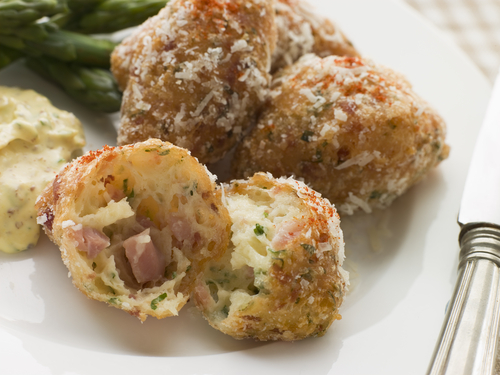
More Ideas for Christmas Leftovers
1. Make fritters of ham and leftover chicken or turkey. There's a great recipe for Croquetas De Lhardy in Penelope Casas' The Foods and Wines of Spain. Lhardy is a Madrid dining institution renowed for its tapas.
2. Ham & cheese beignets are a delightful snack to serve guests dropping in during the holiday season. These are essentially made by adding chopped ham and grated cheddar into choux puff pastry and deep-frying them.
3. The post-Christmas feast is also the best time to make pea and ham soup as you have the bonus of ham bones.
4. In Australia, where temperatures soar during the festive season, the French Jambon Persillé (mould of ham and parslied aspic) is hard to beat both for its visuals and its refreshing texture and flavour.
5. In his The Raj at Table: a Culinary History of the British in India, David Burton wrote: "Worst of all was the English tendency to debase the curry to the main function of using up leftovers. 'You may curry anything,' suggested Mr Arnot of Greenwich, 'old shoes should even be delicious, some old oil cloth or staircarpet not to be found fault with (gloves if much worn are too rich).'"
Without meaning to denigrate the glories of curry as the good Mr Arnot did, the fact is leftover chicken and turkey do make excellent curries. Don't limit your imagination to Indian curries: the Malaysian Eurasian Devil or Debal Curry, cooked for special occasions such a Christmas, is an excellent one for post-Christmas feasts. Based simply on ground spices and vinegar, it's a refreshing break from rich meals that abound at this time of year. Best of all, this curry works brilliantly for any or all of chicken, turkey, ham and even roast beef or pork. It keeps well for a week in the refrigerator: add vegetables such as beans, okra and cabbage when reheating it. Serve with rice or a crusty baguette.
Happy Holidays!

